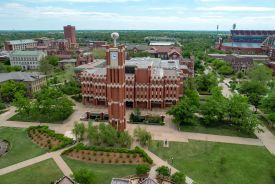Minorities living in the U.S. are exposed to 38 percent higher levels of nitrogen dioxide (NO2) than whites, according to University of Minnesota study.
Nitrogen dioxide is emitted from vehicle exhaust and power plants and is known to trigger symptoms for asthma and heart diseases. NO2 is one of the seven air pollutants that are constantly monitored by the Environmental Protection Agency.
Researchers first analyzed NO2 levels in urban areas across the country and closely looked at cities that had "non-white" or "white" areas defined in the U.S. Census.
It was found that Nitrogen dioxide levels had direct impacts on the health of whites and nonwhites. Experts believe, nearly 7,000 deaths caused by heart diseases can be avoided if nonwhites inhaled lesser NO2, similar to levels of the pollutant exposure in white people.
"We were quite shocked to find such a large disparity between whites and nonwhites related to air pollution," Julian Marshall, a civil engineering associate professor in the College of Science and Engineering and co-author of the study, said in a press release. "Our study provides a great baseline to track over time on important issues of environmental injustice and inequality in our country."
This is the first study to use satellite observations, measurements by the Environmental Protection Agency and maps to investigate countrywide differences in exposure to air pollution.
It was also observed that on an average, majority of low-income nonwhites have more pollutant exposure compared to higher-income whites. Race and ethnicity of the people was a better factor that helped explain variation in NO2 exposure than their income levels.
The findings revealed New York, Pennsylvania and Illinois reportedly have the largest exposure gaps between whites and nonwhites. Similar trend was observed in urban areas like New York/Newark, Philadelphia and Bridgeport/Stamford, Conn.
"Our findings are of broad interest to researchers, policy makers and city planners," said Lara Clark, co-author of the study and civil engineering Ph.D. student in the College of Science and Engineering. "The next step in the research would be to look at why this disparity occurs and what we can do to solve it."
The study titled "National patterns in environmental injustice and inequality: Outdoor NO2 air pollution in the United States" is published in the journal PLOS ONE.
© 2025 University Herald, All rights reserved. Do not reproduce without permission.








